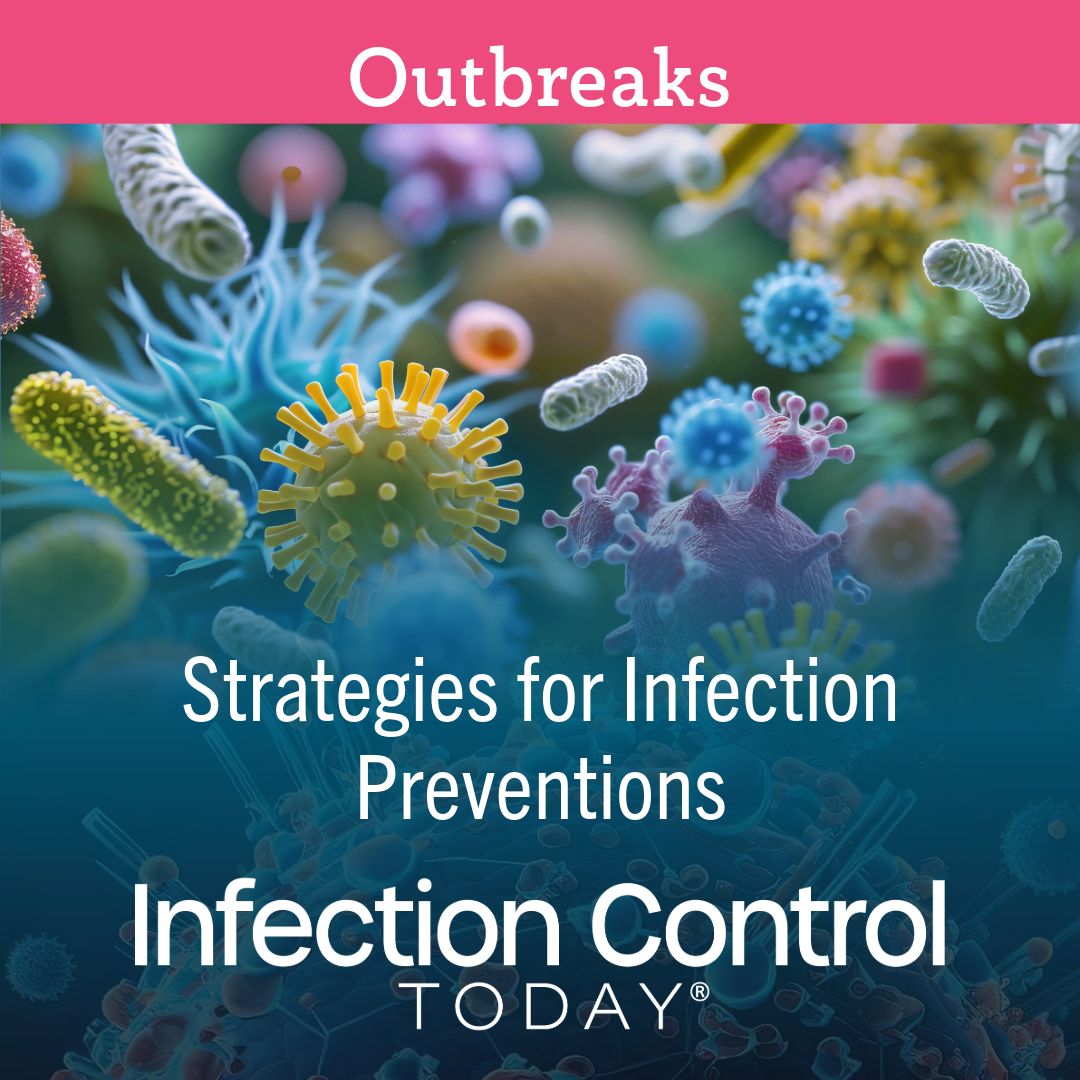Winter Strategies for Infection Preventionists in Managing Recent Norovirus and Avian Influenza Outbreaks
Norovirus and avian influenza outbreaks require infection preventionists to enhance hygiene, train staff, implement PPE use, and ensure effective disinfection to protect health care workers, patients, and facilities.
Outbreaks
(Adobe Stock 8888425022 by ImageKing)

The US has recently faced rising concerns regarding norovirus outbreaks and avian influenza (H5N1). Both infections present unique challenges in health care settings, emphasizing the critical role of infection preventionists in safeguarding staff, patients, and the community. This article outlines the key characteristics of these outbreaks and practical strategies for infection preventionist in educating and protecting health care personnel.
Norovirus is a highly contagious virus that causes acute gastroenteritis. The CDC shows 91 outbreaks in the US up to December 5, 2024.1* It spreads primarily through contaminated food, water, surfaces, and direct contact with infected individuals. Symptoms, including diarrhea, vomiting, and stomach pain, usually appear within 12 to 48 hours of exposure and can last up to 3 days. Norovirus can survive on surfaces for weeks, making environmental hygiene a top priority for facilities.
Avian influenza, particularly the H5N1 strain, primarily affects birds but has crossed humans in rare instances through direct contact with infected poultry or contaminated environments. Human cases of H5N1 can result in severe respiratory illness, with symptoms such as fever, cough, and difficulty breathing. The mortality rate remains high, although human-to-human transmission is exceedingly rare. CDC has confirmed several cases of bird flu in the US in December of 2024.2
Infection preventionists must ensure that health care workers understand the transmission pathways and clinical manifestations of norovirus and avian influenza. Regular training sessions and updated protocols can empower staff to recognize early signs of these infections and implement appropriate precautions. Hand hygiene is a cornerstone of infection prevention. For norovirus, handwashing with soap and water is vital. Alcohol-based hand sanitizers is not effective against norovirus. Hand hygiene remains critical for avian influenza, especially after handling respiratory secretions or contaminated surfaces.
In norovirus outbreaks, infection preventionists should work closely with their environmental services to advocate using US Environmental Protection Agency-approved disinfectants (eg, quaternary ammonium) that are effective against nonenveloped viruses. High-touch surfaces and shared equipment must also be disinfected frequently.
In the case of avian influenza, ensure proper cleaning of rooms where infected patients are treated, using disinfectants effective against influenza viruses and EPA-approved disinfectants against avian flu.3 Patients with suspected or confirmed norovirus should be on contact precautions for up to 48 hours or until symptoms resolve. Airborne and contact precautions are necessary for avian influenza, including using N95 respirators, eye protection, and negative-pressure rooms.4
While there is no vaccine for norovirus, seasonal influenza vaccination may offer partial protection against avian influenza strains. Depending on the infection risk, infection preventionists should ensure staff access to adequate personal protective equipment, including gloves, gowns, masks, and face shields. Clear, consistent communication is vital. Staff should be regularly updated about the outbreak status, protocol changes, and available resources. Email, posters, and in-person briefings are utilized in daily safety huddles to disseminate information efficiently.
Outbreaks of norovirus and avian influenza demand vigilant efforts from infection preventionists to protect healthcare workers and patients. By prioritizing education for staff, especially at the point of entry of the facility (eg, emergency rooms), continuous reminders for hygiene practices, and effective communication, health care facilities can mitigate the impact of these infections and maintain a safe environment during the winter season.
*Editor’s Note: The Trump Administration has limited official communications to the public and health care workers until at least February 1, 2025.
References:
- Norovirus: NoroSTAT Data Table. CDC. Accessed February 2025. https://www.cdc.gov/norovirus/php/reporting/norostat-data-table.html
- CDC Reports on H5N1 Avian Flu Developments. CDC. December 18, 2024. Accessed February 2025. https://www.cdc.gov/media/releases/2024/m1218-h5n1-flu.html
- EPA's Registered Antimicrobial Products Effective Against Avian Influenza. U.S. Environmental Protection Agency. February 2025. https://www.epa.gov/pesticide-registration/epas-registered-antimicrobial-products-effective-against-avian-influenza
- Occupational Safety and Health Administration. Avian Flu: Control and Prevention Guidelines. Accessed February 2025. https://www.osha.gov/avian-flu/control-prevention#:~:text=Place%20patients%20with%20suspected%20avian,room%20with%20the%20door%20closed